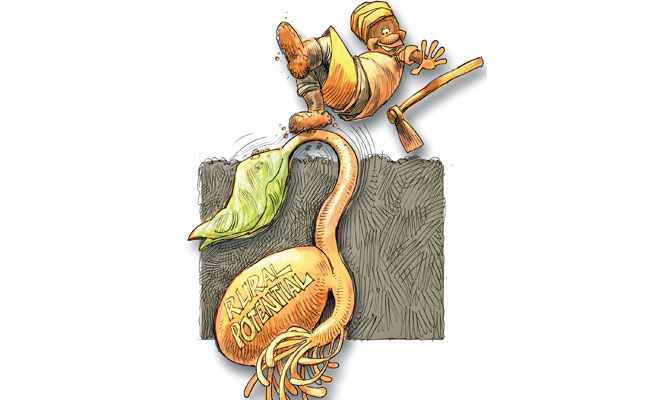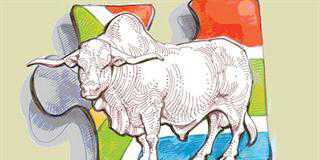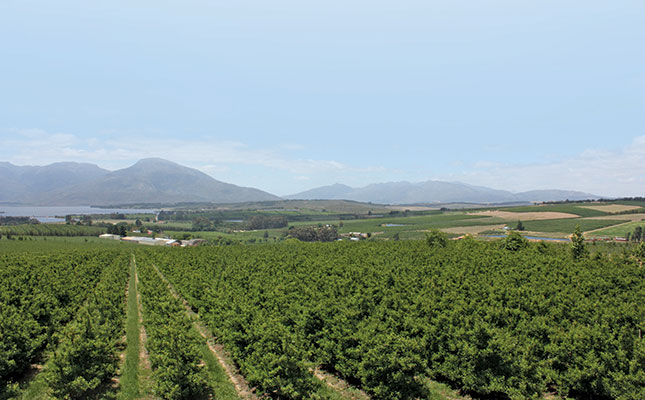
Agriculture remains the main economic sector in low-income countries, especially in rural areas, despite the number of jobs it supports falling as economies develop.
In 2017, agriculture accounted for 68% of employment in low-income economies. Improving agricultural incomes is therefore an effective way of reducing poverty.
However, the combined forces of automation and open trade work against agricultural employment in developing countries. Meanwhile, capital-intensive agriculture in advanced economies may be reducing the demand for imports from developing economies.
The result is faster urbanisation in Africa and South Asia, where the challenges of people moving to cities are proliferating.
Narrowing the urban-rural gap
On the one hand, earnings could rise: in emerging economies an additional year of city work experience is worth a 2,2% increase in pay.
The returns from work in urban areas are 1,7 times more than in rural areas where agriculture is predominant, or a premium of 70%.
This reflects a global pattern. In Indonesia and Mexico, the returns are 50% higher in urban areas than in rural areas, and in China, India and Vietnam the payoffs are double.
On the other hand, opportunities in the city can be limited. There, workers typically require some level of education to access most of the better jobs. The constraints faced by the poor in moving to cities have been well documented. In India, workers in Odisha give at least two reasons for not staying in the city.
First, there is no housing; the poorest often squeeze themselves into swamps or slums alongside refuse dumps. By contrast, villages offer more open, greener and quieter spaces.
Second, those moving their families to the city face considerable risks.
If their children fall ill, they can access better healthcare, but will anyone lend them money if they are in need? The connections developed in villages serve as safety nets for the poor, who are vulnerable.
To reduce poverty, governments may be tempted to move poor workers from villages who rely mainly on agriculture to cities to raise the overall pay for work experience in the economy.
However, this movement is unlikely to do much to narrow the pay gap between emerging and advanced economies. Studies conducted in Indonesia and Kenya have found that improvements in rural areas are necessary to narrow that gap.
Between the bustling cities and the subsistence agriculture-oriented villages lie secondary towns.
They play a special role in facilitating the transition of rural workers to off-farm employment, much of it related to agriculture. Secondary towns occupy an important space between villages and cities, enabling movement up and down the value chain. In the early stages of development, growing secondary towns may do more to alleviate rural poverty than cities, but in later stages of development, the cities take over.
Building blocks of development
As economies develop, agricultural productivity rises, unlike productivity in the informal sector. But the challenges facing farmers in emerging economies are many, and governments play an important part in raising productivity.
Smallholders have limited access to agricultural inputs such as fertilisers and machinery, as well as services that increase their productivity; they are not integrated into value chains.
Value chain development allows farmers to capture the urban demand for higher-value agricultural products such as dairy, meat, fruit and vegetables. Poverty reduction is faster when agriculture shifts from raising staple crops to non-staple crops.
Such a step requires raising staple crop productivity well beyond the current levels in sub-Saharan Africa.
Policymakers are making progress in some areas. Examples are programmes that transfer knowledge, and initiatives that exploit digital technologies to increase access to input, output and capital markets.
Training farmers in the best farming techniques has been shown to raise productivity. Some projects expand training programmes or collaboration to improve the exchange of information.
At times, this has been combined with increasing access to finance or the inputs required for agriculture as an impetus for improving agricultural productivity.
Providing co-operatives with resources improves linkages between agribusinesses along the value chain. JD Finance, the fintech arm of JD.com, a leading Chinese e-commerce platform, has been providing farmers with microcredits.
For example, the Integrated Growth Poles Project in Madagascar, which provided farmers with training in improved cocoa processing practices and business management skills, resulted in beneficiaries seeing an average increase in net revenue of 47%.
In Afghanistan, farmer field schools, which are part of the National Horticulture and Livestock Project, tripled the income of some participants. They have also been successful in East Africa.
Government initiatives to link farmers with producer organisations, agribusiness purchasers and financial institutions in the sorghum sector in northern Cameroon had similar effects. Agricultural extension services can be improved through low- cost videos that leverage the knowledge and participation of local communities.
Mechanisation and digital technology
Mechanisation has, in the past, failed to take a foothold in sub-Saharan Africa, opening the door to scepticism about ambitious predictions of the technological transformation of agriculture.
Yet, thanks to new information and communication technologies, there are signs that mechanisation is happening. Instantaneous measurements enable farmers to make better decisions.
Drones, aerial images from satellites, and soil sensors improve measurements and crop monitoring. Detailed information enables farmers to decide how much fertiliser and irrigation are appropriate.
Mobile technology in Kenya is reducing the administrative and assessment costs of crop insurance schemes. A good illustration is the app Kilimo Salama (Swahili for safe farming), which became ACRE Africa in 2014.
The seller activates the insurance policy by scanning a product-specific bar code with a camera phone, entering the farmer’s mobile number, and connecting the farmer to the local weather station. Thirty solar-powered weather stations automatically monitor the weather.
The farmer receives a text message confirming the insurance policy. Indemnity payments are made through the M-Pesa platform. By 2017, over a million farmers in Kenya, Rwanda and Tanzania were insured under this project.
Market access
For farmers to profit from increased agricultural productivity, they need access to markets, both at home and abroad. Export-oriented agriculture in northern and central Mexico provides on-farm job opportunities for millions of farmers as well as for many others off-farm engaged in agrifood processing and packaging activities.
In addition to streamlining export processes, improving the trade logistics infrastructure, and increasing food safety compliance capacity, governments can facilitate exports through exporter training and marketing assistance.
For example, the Vietnamese government works with industry organisations to deliver coordinated branding campaigns for tea, coffee and cashew nuts.
When farmers’ crops finally go to market, many of those in emerging economies do not know whether they are getting the best prices. A digital technology that is bridging this information gap is TruTrade in Uganda.
This connects smallholders to buyers while raising quality and transparency and creating an atmosphere of trust. It uses online applications to allow price-setting and tracks the movements of produce and payments.
Farmers receive good prices and reliable access to markets. Traders build relationships as trusted providers, thereby growing their businesses.
Work is the next opportunity for human capital accumulation after school. Poorer economies have much to do because they lag behind advanced economies in the returns to work.
Governments can raise these returns by increasing formal jobs for the poor, enabling women’s economic participation, and expanding agricultural productivity in rural areas. Formal jobs create more learning opportunities.
Empowering women will raise the stock of human capital in the economy, and expanding agricultural productivity in rural areas will provide better work opportunities for the poor.
Jobs that generate and build skills will prepare workers for the future.
The views expressed in our weekly opinion piece do not necessarily reflect those of Farmer’s Weekly.
This is an edited excerpt from the World Bank Group’s World Development Report 2019,
‘The Changing Nature of Work’.











